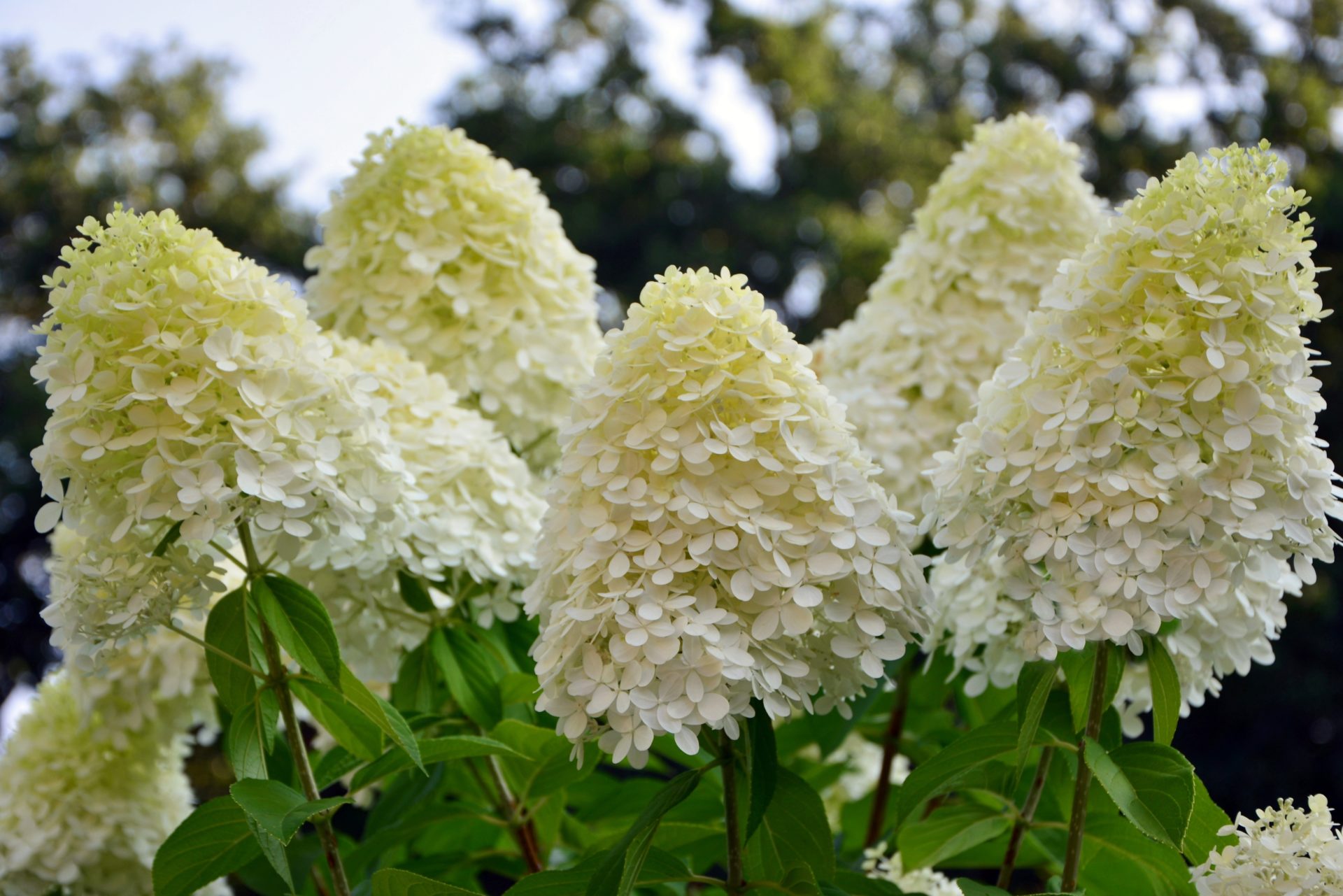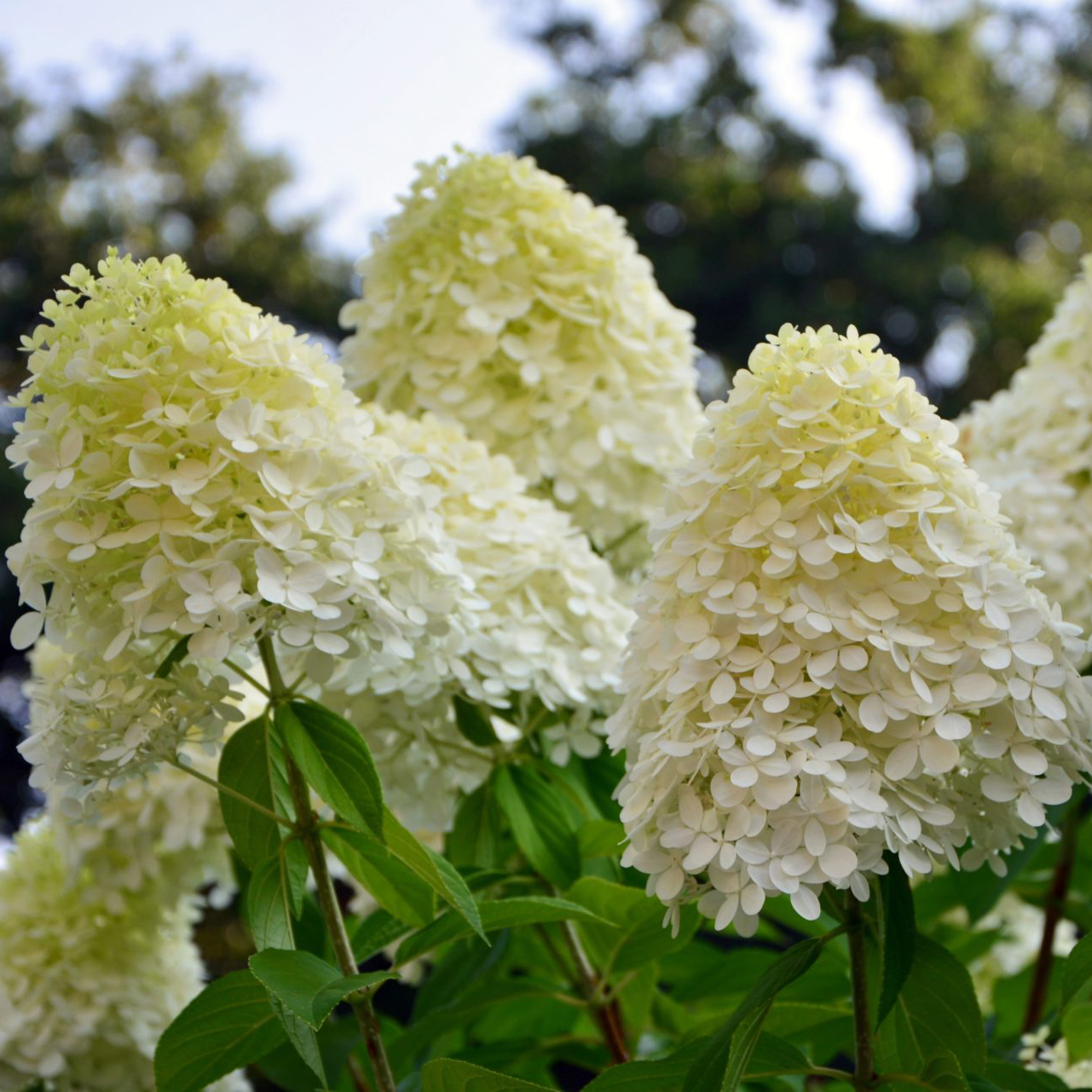Few plants stand-out so spectacularly in the autumn garden as the panicle hydrangeas (Hydrangea paniculata & its cultivars). Fall’s cooler temperatures transform the flower colors of this species to create dynamic changes in the garden. Recently a lot of exciting new cultivars have become available, offering improved flower and growth features that enhance our choices for smaller gardens and more refined settings. It is a Cary Award winning species, recognizing its reliability and season-extending value in the landscape.
Panicle hydrangea’s name refers to the cone shaped flower panicles which reliably appear from July through September. Native to eastern Asia, the species is well adapted to this region, winter hardy to at least Zone 4 (most of New England), grows quickly in most any soil, tolerates seashore conditions, prefers sunny exposed locations and is long lived. Grown as a multi-stem shrub or single trunk tree, it can grow high and wide, or stay small, depending upon the cultivar. It offers the advantage of flowering on new growth, so it can be shaped and pruned, even quite severely, at most any time of year without sacrificing its flowers.

Hydrangea paniculata ‘Grandiflora’ is the familiar, ubiquitous cultivar that has been widely used since the 1800s. Commonly called the “PeeGee” or “PG” hydrangea (a contraction of its cultivar name), it grows rapidly to 20 ft. or more. PG’s flower heads are large and heavy, comprised of many sterile white florets cascading profusely at the end of every branch. As autumn progresses the flowers become rose-pink and eventually brown for the winter. The rapid growth and coarse appearance of the PG hydrangea often relegate it to larger garden settings, and it has become a familiar plant in cemeteries nationwide.
Here are some of the newer cultivars that typically mature at around 8-10 feet high:
- Pinky Winky®. Huge, boldly conical white flowers that turn dark pink on strong upright red stems at the ends of the branches
- Limelight. More compact growing than PG, with rounded trusses of lime-green sterile flowers that turn pink and finally beige as autumn progresses
- Quick Fire®. Slower growing with flowers that come into bloom a month earlier than PG, and turn rosy pink earlier in summer.
Some newer cultivars that grow to 8 ft. or less, are well suited for smaller gardens:
- Fire Light®. Enormous white and pink upright blooms in mid-summer, turning red as fall progresses, on a 6-8 ft. tall multi-stem plant
- Strawberry Sundae®. Large conical flower trusses that emerge white, change to pink, and then finally mature to strawberry red; grows to about 5 ft. high, great for smaller spaces and containers
- Little Lime. Smaller and more compact growing, than its namesake ‘Limelight’, maturing at around 5 ft. high, with similar flower color progression
- Little Quick Fire®. Slower and smaller than ‘Quickfire’, reaching about 5 ft. with similar flowering features
- Bobo®. The smallest and most compact cultivar available, maturing at only 3 ft. high and somewhat wider; rounded cones of white flowers turn pink in fall.
Freshly cut Hydrangea paniculata flowers also make wonderful bouquets. As the cut flowers become dry they transform into incredible shades of rose pink, mauve, and tan, depending upon the cultivar and the stage when they were cut. Spent flowers that remain on the plants in the garden should be removed before growth begins next spring, but be sure to enjoy their appearance dusted with the snow in winter.







